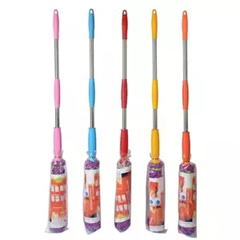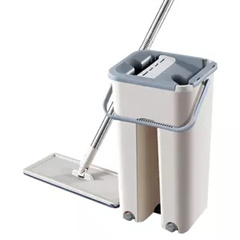Certainly! Here are some pro top tips for using a mop effectively:
- Choose the right mop: Select a mop that suits your cleaning needs. Microfiber mops are excellent for capturing dirt and debris, while string mops are more suitable for heavy-duty cleaning tasks.
- Sweep before mopping: Before you start mopping, sweep or vacuum the floor to remove loose dirt and debris. This will prevent the mop from pushing around dirt and help achieve a cleaner result.
- Use the proper cleaning solution: Depending on your floor type, use an appropriate cleaning solution. For hardwood or laminate floors, use a cleaner specifically designed for these surfaces, while tile and vinyl floors can handle general floor cleaners.
- Dilute cleaning solutions correctly: Always follow the manufacturer’s instructions for diluting cleaning solutions to the correct ratio. Using too much or too little can lead to streaks or ineffective cleaning.
- Start from the farthest corner: Begin mopping from the farthest corner of the room and work your way towards the exit. This ensures you won’t walk on the freshly mopped areas.
- Use the figure-eight motion: Instead of making straight back-and-forth motions, try using a figure-eight motion with the mop. This technique covers a larger area and prevents streaks.
- Don’t oversaturate the mop: Avoid soaking the mop head with excess water or cleaning solution. Too much liquid can damage some types of floors and make the mopping process less effective.
- Rinse the mop frequently: Rinse the mop in clean water regularly while cleaning to remove dirt and prevent spreading it across the floor.
- Change mop heads when necessary: If you are using a mop with replaceable heads, change them regularly according to the manufacturer’s instructions or when they become visibly dirty.
- Dry the floor after mopping: If your floor type allows it, follow up with a dry mop or a clean, dry cloth to absorb any leftover moisture and leave the floor sparkling clean.
- Clean and store the mop properly: After use, thoroughly clean the mop and allow it to dry completely before storing it. Storing a damp mop can lead to mold and unpleasant odors.
By following these tips, you’ll be able to achieve cleaner floors more efficiently and maintain the longevity of your mop. Happy cleaning!








